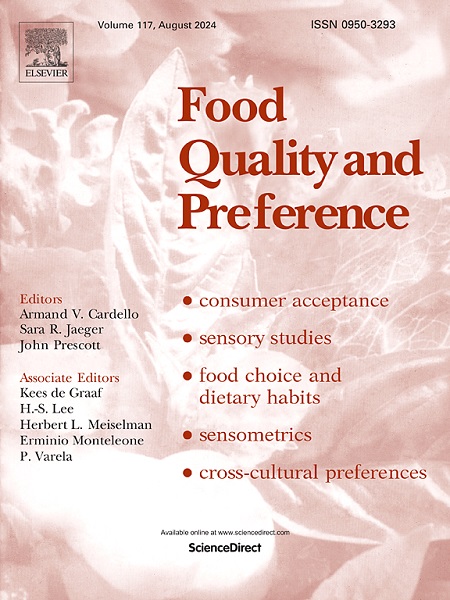Defining core science of ‘sensory and consumer science’: Understanding human sensory perception, foods/materials interaction, and their influence on consumer behavior, health, and well-being
IF 4.9
1区 农林科学
Q1 FOOD SCIENCE & TECHNOLOGY
引用次数: 0
Abstract
Jaeger et al.’s paper in 2025 addresses the evolving definitions of Sensory and Consumer Science, highlighting major shifts over time. They present a contemporary perspective based on survey data and invite further discussion. In response, this paper introduces and discusses key developments and definitions that have not been adequately addressed, including the evolving scope of Sensory and Consumer Science within the Asian region, particularly in South Korea. The definition of Sensory and Consumer Science should capture its uniqueness and the core scientific disciplines that enable it to develop as a coherent science. This paper argues that Sensory and Consumer Science should be recognized as an interdisciplinary and multidisciplinary science that systematically examines the interaction between human sensory perception and material stimuli, influencing consumer behavior, health, and well-being. To expand its global impact, Sensory and Consumer Science must be defined as a convergence science that integrates multiple disciplines such as psychology, cognitive science, neuroscience, nutrition, and materials science, promoting varying levels of interdisciplinary integration. A precise definition of its interdisciplinary scientific scope and methodologies is essential to ensuring its continued development. The South Korean case demonstrates how formal academic recognition at the national level establishes Sensory and Consumer Science as a structured and independent discipline. This recognition reinforces the importance of defining core interdisciplinary methodologies, securing future research, funding, and educational programs, and ensuring the field's long-term academic legitimacy.
定义 "感官与消费科学 "的核心科学:了解人类的感官知觉、食品/材料的相互作用及其对消费者行为、健康和福祉的影响
Jaeger 等人在 2025 年的论文中论述了感官与消费科学定义的演变,强调了随着时间的推移而发生的重大变化。他们根据调查数据提出了当代观点,并邀请大家进一步讨论。作为回应,本文介绍并讨论了尚未得到充分讨论的主要发展和定义,包括感官与消费科学在亚洲地区,尤其是韩国不断演变的范围。感官与消费科学的定义应体现其独特性以及使其发展成为一门连贯科学的核心科学学科。本文认为,感官与消费科学应被视为一门跨学科和多学科的科学,它系统地研究人类感官知觉与物质刺激之间的相互作用,影响消费者的行为、健康和福祉。为了扩大其全球影响,必须将感官与消费科学定义为一门融合多学科的科学,如心理学、认知科学、神经科学、营养学和材料科学,促进不同程度的跨学科整合。准确界定其跨学科科学范围和方法对于确保其持续发展至关重要。韩国的案例表明,国家层面的正式学术认可如何将感官与消费科学确立为一门结构严谨的独立学科。这种认可加强了确定核心跨学科方法、确保未来研究、资金和教育计划以及确保该领域长期学术合法性的重要性。
本文章由计算机程序翻译,如有差异,请以英文原文为准。
求助全文
约1分钟内获得全文
求助全文
来源期刊

Food Quality and Preference
工程技术-食品科技
CiteScore
10.40
自引率
15.10%
发文量
263
审稿时长
38 days
期刊介绍:
Food Quality and Preference is a journal devoted to sensory, consumer and behavioural research in food and non-food products. It publishes original research, critical reviews, and short communications in sensory and consumer science, and sensometrics. In addition, the journal publishes special invited issues on important timely topics and from relevant conferences. These are aimed at bridging the gap between research and application, bringing together authors and readers in consumer and market research, sensory science, sensometrics and sensory evaluation, nutrition and food choice, as well as food research, product development and sensory quality assurance. Submissions to Food Quality and Preference are limited to papers that include some form of human measurement; papers that are limited to physical/chemical measures or the routine application of sensory, consumer or econometric analysis will not be considered unless they specifically make a novel scientific contribution in line with the journal''s coverage as outlined below.
 求助内容:
求助内容: 应助结果提醒方式:
应助结果提醒方式:


